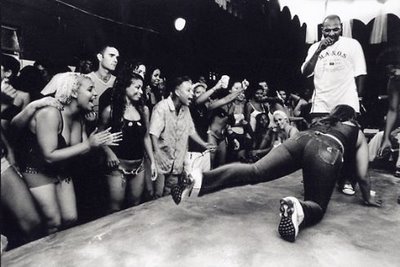Currently I am attempting to write an essay about the pacification project by the government in Rio de Janeiro, Brazil. This project aims at replacing the violent military police BOPE (as you might know from the movie Tropa de Elite) with a so-called socially trained police called Pacification Police Unit (UPP).
The main objective is the recovery “of these areas lost to trafficking and socially including the most marginalised of the population through the implementation of this special unit. The project’s official website explains that this unit is a new model of Public Security and policing which promotes a closer and improved relation between the police and the citizens. The main objective of this program is to integrate the police into community life. It is a strategic concept based on the collaboration of the citizens and the public security institutions.
How will this new protector be received? The feelings of a traumatised people that has given up to believe in the government’s goodwill are now mixed with new hope, but also with simultaneous disappointment as those promises are not entirely lived up to. This is reflected in the discussion about the UPP. On the one hand positive voices are heard. Violence has significantly decreased and most of the drugs lords are exiled from the favelas that are occupied by the UPP. In Cidade de Deus, for instance, is no more shooting. One particular news item reports on a high authority from the UK who visited the favela and the fact that there was no extra protection necessary in order to receive this woman.
Other reports, interviews and comments in discussions on the web argue that favela residents have embraced the new police men. They are accepted as new authorities in the favelas and have even replaced the drugs trafficker as the young boys’ hero. On the other hand, however, it is argued that politicians have a clear stake in the implementation, seeing a new possibility to gain votes by the middle class. Also, two major international events – the olympic games and the world cup in 2014 and 2016 – at which Brazil can prove its socio-economic improvements to the outside world are seen as important motives for “organising” the city. As they initiated the program in the favelas located in the city’s south (Zona Sul), the richest and most touristy area of the city, the effect would be much more visible to the middle class than starting in the peripheries or suburbs of the city. Moreover, it is argued that precisely these favelas in which the UPP has been installed are those that are considered less violent. In the most challenging favelas the operation has not started yet. These critiques are hard to prove, but reflect the wary attitude towards the government by a part of the population.
While the implementation of the UPP has proved to be successful in providing security in terms of significant reduction of violence inside the favelas within which they operate, one might argue what “security” entails. Is pacification enough? And will the end of violence bring peace, and not the least important, equality? That is, what do we consider violence, merely armed violence or violence in terms of lack of access to basic services? When these areas were under rule of drugs traffickers, access to water, electricity, cable tv and housing was democratised. No that these economies are formalised, costs rise and access to these services become very expensive for most residents.
But perhaps more important is the question of participation of the local people in this process. An article in Direito Para Quem, a human rights journal, gives a voice to Rapper Fiell, who explains that the famous Funk parties (Baile Funk) are now prohibited, just as the cyber cafés and other “illegitimate” forms of leisure. This same guy took the initative to create a flyer that informs about the rights of the people and how they are often abused by the police. He claims: “On the asphalt (middle class/elite areas) people like the work of the UPP, but here in the favela we are forced to adapt to the program without the ability to participate”. What about a participatory democratic process, in which citizens have a voice? Doesn’t the fact that the UPP occupies these favelas suggests that this is a form of repression?
Pacification certainly is a good step, but too often policy makers fail to take into account local structures. Something that struck me in Brazil is the very strong social organisation in the form of, for instance, neighbourhood or community associations that represent the voices of the people. To what extent do they have a role in the implementation of this project? It’s hard to form an opinion about an oversea situation… For now I just got upset by the fact that Fiell’s Funk parties had stopped. I just sent a friend request to the APAFUNK (associação dos profissionais e amigos do FUNK – association of professionals and friends of FUNK)..


